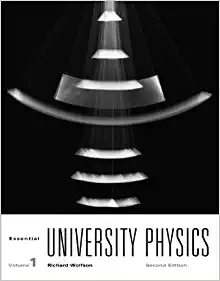Answered step by step
Verified Expert Solution
Question
1 Approved Answer
During this project you will look at the pH of a few substances in your house, make a new solution containing these substances, and then
During this project you will look at the pH of a few substances in your house, make a new solution containing these substances, and then find the final pH of this new solution. Since pH's are a representation of H,O* ions in a solution, we are usually talking about very small values. Thus the use of pH is to be able to efficiently scale substances containing a different concentration of H,O* ions. The range of pHs goes from 0 to 14. A pH of 0 is very acidic, and a pH of 14 is very basic. The more acidic a substance, the less basic it is, and vice versa. The unit for this concentration will be Molarity (M), which is also known to be the number of moles (or a certain number of atoms) of the ion per Litre of solution. Knowing M = mol/L will be helpful later in the project (so it might be good to remember it). So if we know [H30+ (the "I I" mean "the concentration of"), then we can find the pH as pH = -log[H30+] Where "log" is the logarithm function (you can find it on your calculator). So for future use, you'll need to be able to find the [H3O+] given the pH, so we will need to solve this equation for [H3O+] in terms of pH. Use the following space to do so: ph = -log[H30+] Therefore, [H30+]: Okay, so let's get started, find three generic household liquids. Some examples might be: Cooking liquids (vinegar, ketchup, honey, etc.), beverages (fruit juices, water, pop, etc.), or even cleaning products (windex, drain cleaner, hand soap, etc.). The only 2 liquids you can't use are Lemon Juice and Milk. Record the substance and its approximate pH (after researching it) below: Substance 1: PH of substance 1: Substance 2: PH of substance 2: Substance 3: PH of substance 3: Okay, now that we have the pH of each of the liquids, let's find the concentration of H30+ ions in each of them. Use the equation you made in the previous section to make it easier. Find the H30+ of substance 1 in moles per litre: Find the H30+ of substance 2 in moles per litre: Find the H30+ of substance 3 in moles per litre: Now we are going to do something crazy with these three substances. Mix them together. Okay, not actually, but we're going to pretend that we did. I told you it was crazy... Anyways, let's say we made a new solution using a mixture of the three liquids you researched earlier. You know their pH and the (H,O'] contained in them, so if you took a certain amount of each of them would you be able to find the pH of that new solution? It might seem difficult right now, but let's take it step by step. The amount of each substance are as follows: Take 1L of Substance 1 Take 2.5L of Substance 2 And take 5.6L of substance 3 First you can find the total amount of H30+ present if we took the previous amount of each substance. Find H30+ in 1 L of substance 1 in moles: Next find H30+ in 2.5L of substance 2 in moles: Finally find H30+ in 5.6L of substance 3 in moles: And now we can add the H30+ from the three substances in the new solution. Total H30+ in the new solution in moles: Alright, now we have the total amount of the ion in moles. With the amount of Litres in the new solution, we can find the [H30+ and then the ph of the new solution. PH of new solution: Now find the PH of lemon juice and milk: Now figure out how many more times acidic or basic your new solution is than lemon juice and do the same for milk. Thank you so much
Step by Step Solution
There are 3 Steps involved in it
Step: 1

Get Instant Access to Expert-Tailored Solutions
See step-by-step solutions with expert insights and AI powered tools for academic success
Step: 2

Step: 3

Ace Your Homework with AI
Get the answers you need in no time with our AI-driven, step-by-step assistance
Get Started


